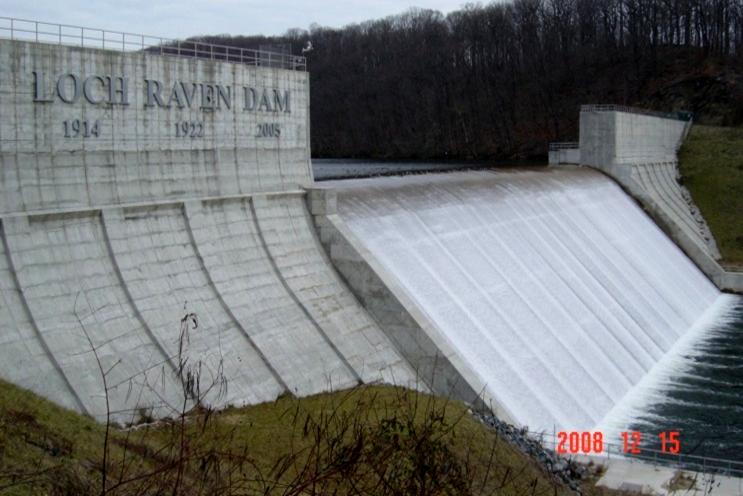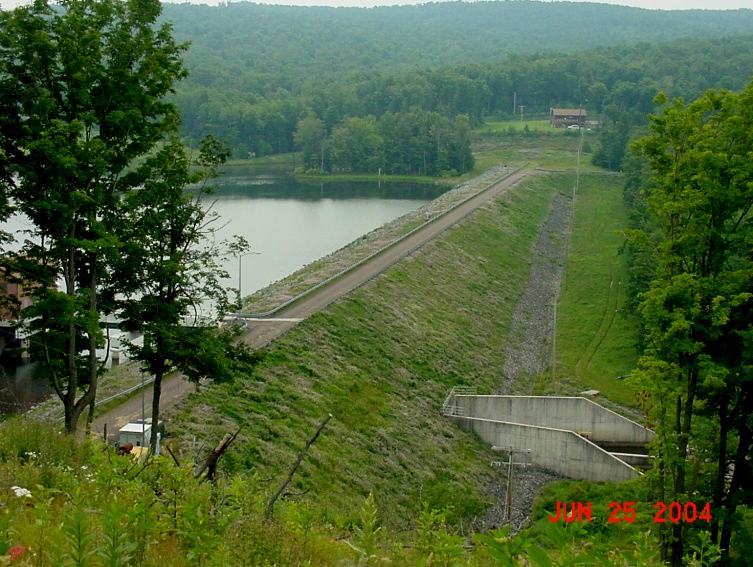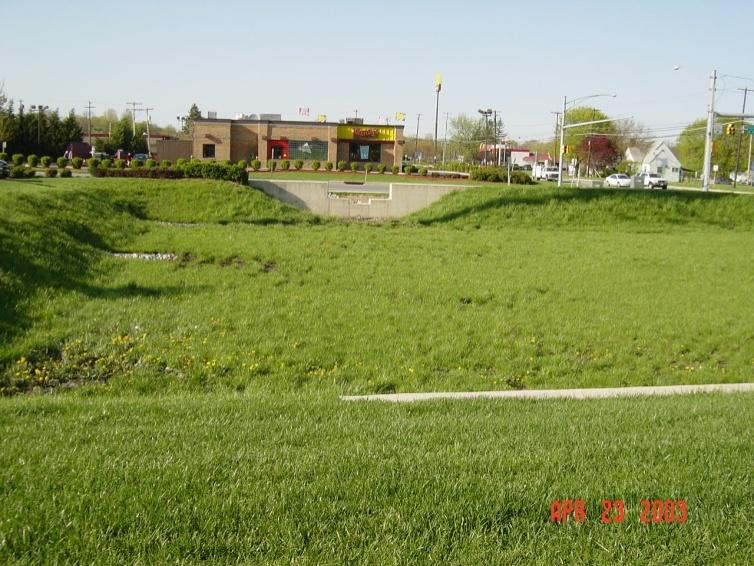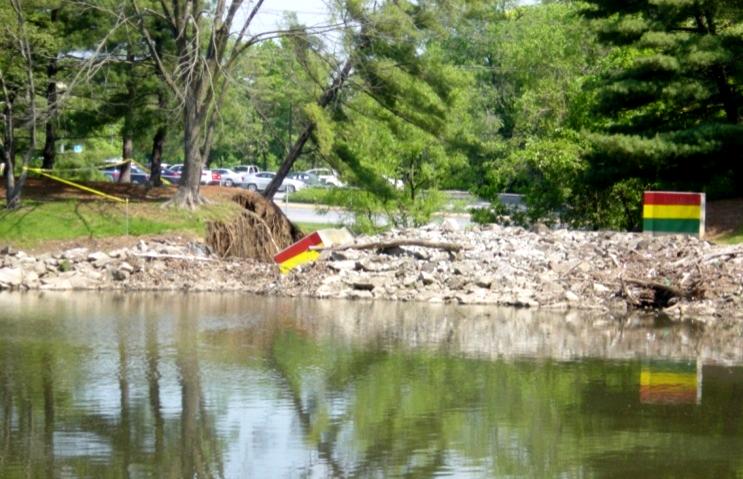The Code of Maryland Regulations (COMAR) defines a “dam” as any obstruction, wall or embankment together with its abutments and appurtenant works built for the purpose of storing or diverting water. The seemingly simple act of impounding water for various uses creates an inherent risk of flooding, downstream property damage, and potential for loss of life.
Recognizing a Dam
Public perception of dams is that they are extremely large structures built out of massive amounts of concrete like the Hoover Dam between Arizona and Nevada and Maryland’s own Conowingo and
 Loch Raven (pictured) dams. The fact is that the average dam in Maryland is about 26 feet high, 60 years old, and built out of compacted soil (earth embankment pictured below). There are over 400 structures on the State’s dam inventory ranging in height from 3 feet to 296 feet and 81 total facilities are considered high hazard, which means that should failure occur, lives would probably be
lost.
Loch Raven (pictured) dams. The fact is that the average dam in Maryland is about 26 feet high, 60 years old, and built out of compacted soil (earth embankment pictured below). There are over 400 structures on the State’s dam inventory ranging in height from 3 feet to 296 feet and 81 total facilities are considered high hazard, which means that should failure occur, lives would probably be
lost.
Purposes for Dams
Dams provide the citizens of Maryland many benefits that are often taken for granted. These include: public drinking water supply, flood control, recreation opportunities, and power generation. Some smaller dams are normally empty but temporarily store rain and provide stormwater management. Others have permanent pools that can be tens and even thousands of acres in size.
Maryland’s Dam Safety History
Maryland’s regulation of dams began in 1934, 5 years after failure of the St. Francis Dam in California. Maryland recognized that the State’s drinking water supply needed to be protected. Over subsequent decades many changes were made to dam and reservoir laws that were associated with water appropriation. However, as a result of several well publicized dam failures in the 1970s throughout the United States that caused significant loss of life, a national dam safety program was developed. Maryland has had a dam safety program ever since.
 Beginning in 1978 at the Department of Natural Resources and later transferring to MDE, the Dam Safety Division has been charged with maintaining the State’s dam inventory, issuing permits for new construction and repairs to existing facilities, performing safety inspections for all dams 20 feet or taller or draining more than one square mile (640 acres) of area, and ensuring that Emergency Action Plans (EAPs) are developed for hazard structures. Certain small ponds (pictured) are regulated by soil conservations districts and other local agencies. Activities performed by MDE’s Dam Safety Division and other related agencies are vital to public safety because of the risks associated with sudden water releases from dam failures. Pictured below is a dam in a state of partial failure with a roadway downstream. The Dam Safety Division ordered removal of the dam.
Beginning in 1978 at the Department of Natural Resources and later transferring to MDE, the Dam Safety Division has been charged with maintaining the State’s dam inventory, issuing permits for new construction and repairs to existing facilities, performing safety inspections for all dams 20 feet or taller or draining more than one square mile (640 acres) of area, and ensuring that Emergency Action Plans (EAPs) are developed for hazard structures. Certain small ponds (pictured) are regulated by soil conservations districts and other local agencies. Activities performed by MDE’s Dam Safety Division and other related agencies are vital to public safety because of the risks associated with sudden water releases from dam failures. Pictured below is a dam in a state of partial failure with a roadway downstream. The Dam Safety Division ordered removal of the dam.
Owner Liability 
MDE’s Dam Safety Program provides technical expertise about all aspects of impoundments and inspects all dams in the State. Dam owners are responsible for operating and maintaining their facilities in a safe and effective manner and addressing problems identified as a result of MDE inspection. This responsibility, and the development and update of EAPs helps dam owners avoid liability that can be caused by sudden failure, downstream property damage, and loss of life.
Contact Information
For more information about Maryland's Dam Safety Program, call (410) 537-3552.
Or write to:
Dam Safety Program
Water and Science Administration
Maryland Department of the Environment
1800 Washington Boulevard, Ste. 440
Baltimore, Maryland 21230